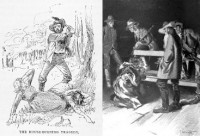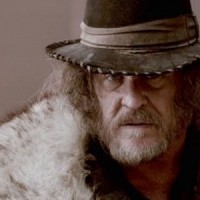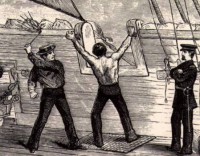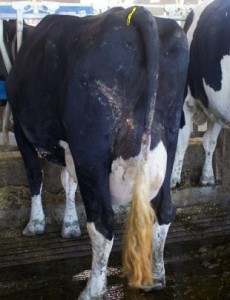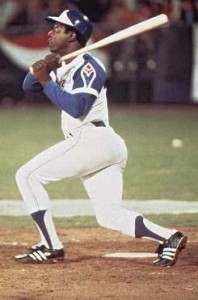These drawings are from “An American Vendetta,” by T.C. Crawford.
The supersized feud story influences all of us—including this writer. The minor errors in my book which have been pointed out to me are the result of vestiges of the “feud story” remaining in my own mind.
As the feud story originated with the yellow journalists of the late nineteenth century, I have been working on a short book that will take them on in detail. The title will probably have the words “Impeaching the witnesses” in it. When a witness is shown to have prevaricated on a material fact, then his entire testimony is impeached. I intend to examine the writings of the 1888 supersizers in detail, comparing the Tug Valley and the people they describe with the actual court records.
In the case of these yellow journalists who wrote about our feud, impeachment is easy. When John Spears tells us that he saw with his own eyes the seven-year-old son of Johnse Hatfield and Roseanna McCoy, we know that he is lying, because no such child ever lived. Why then would we believe anything that John Spears says—including what he says that he personally saw.
T.C. Crawford tells us that he had a lengthy face-to-face conversation with Elias Hatfield on a certain Sunday. He gives a detailed description of Elias, right down to the fact that Elias had sideburns, but no beard. Then Crawford says that only three days later as he and John B. Floyd are approaching the home on Devil Anse on Island Creek, they meet a man with a rifle. The man is shabbily dressed, and has a beard. Crawford doesn’t recognize the man, and the man does not recognize Crawford. Neither does the bearded, rifle-toting stranger recognize the long-time Hatfield family friend, John B. Floyd, until Floyd calls out to him, identifying himself. Then Crawford tells us that the intimidating stranger was none other than Elias Hatfield, the well-dressed and clean-shaven man he said he had a long talk with just three days before!
Of course no one should take Crawford’s word for anything, including his purported interview with Devil Anse, but, when his screed was re-issued earlier this year, the feud industry referred to it as a “Classic.” As Crawford says in the book that he dictated the important parts of the book in only three hours, it is hardly what anyone should call “a classic,’ but, because it super-sizes the story and makes our ancestors appear to be semi-savages, the feud industry loves it.
